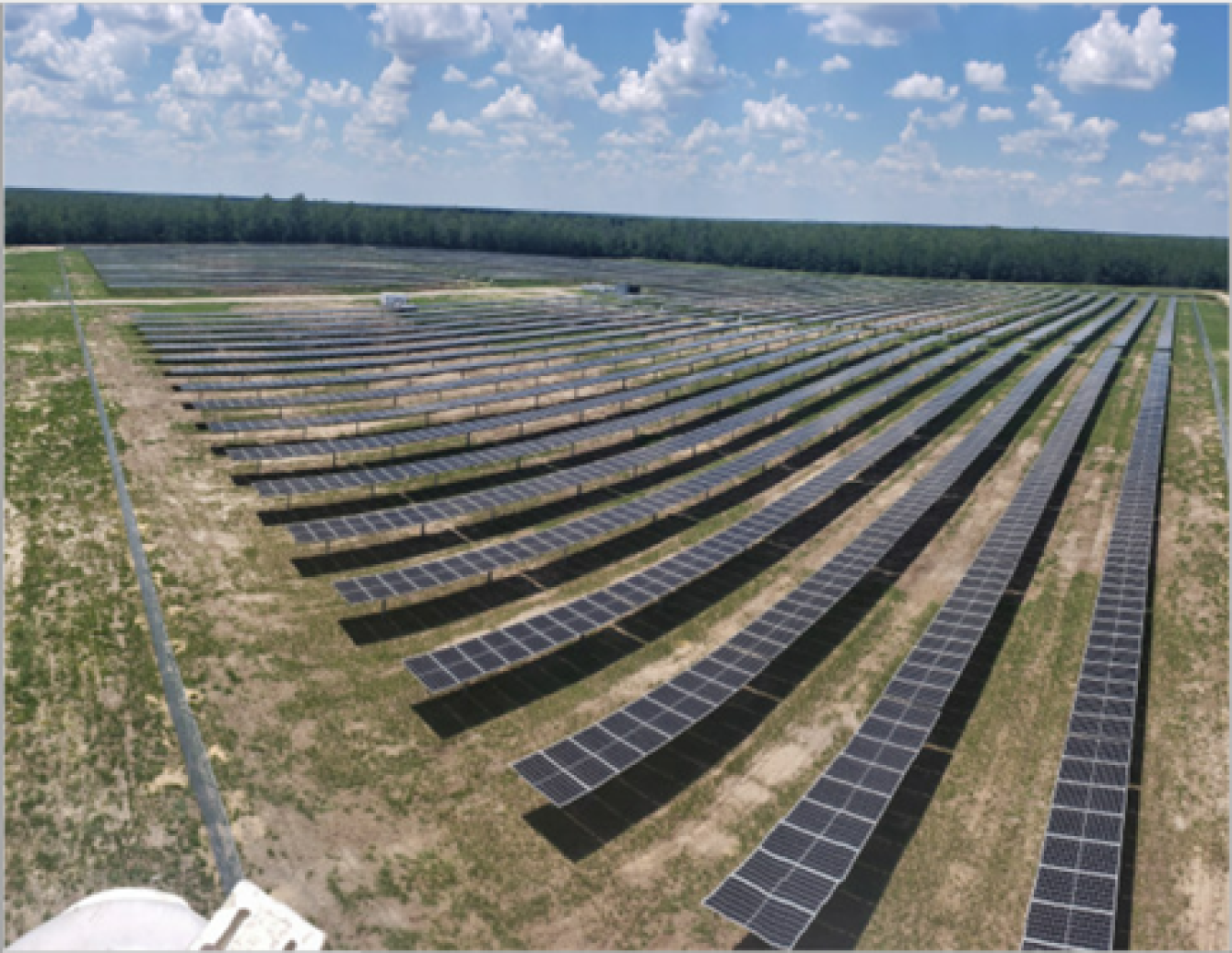
King Hangar at Eglin Air Force Base. As part of a large ESPC, the base upgraded more than 85,000 lighting fixtures across the base.
The energy service company for Eglin Air Force Base in Valparaiso, Florida was awarded a $57.8 million energy savings performance contract (ESPC) in Fiscal Year 2018. The ESPC was awarded on account of significant achievement in terms of public-private partnerships, energy consumption reductions, cost savings, and energy assurance, while supporting multiple United States Air Force (USAF) critical missions.
Unique Contracting Approach Builds in Resilience, Leverages Early Savings to Fund New Measures
As part of the ESPC, Eglin entered into a unique agreement with its natural gas utility, Okaloosa Gas District, which owns privatized gas infrastructure on the site. Eglin's energy service company agreed to purchase and lock prices for the duration of the ESPC, minimizing the risk of gas rate fluctuation and allowing resilience assets to be supported under the terms of the ESPC contract vehicle. Eglin is notified of gas rates 24 hours in advance so they can schedule energy use around price spikes. Securing a long-term fixed natural gas rate was essential to securing the Resiliency MOD to the ESPC and brought the total value of the ESPC project to $134M.
Eglin's ESPC was awarded in phases, with early savings leveraged to fund subsequent project phases. Replacing more than 98,000 lights with light-emitting diodes (LEDs) during the first phase generated savings that fully paid for the combined heat and power system to be implemented in the next phase. The project also employed creative savings streams, such as materials-related cost savings that resulted from standardizing the lighting fixtures. Thanks to this self-funding, phased approach, Eglin Air Force Base did not need to appropriate any funding for the project.
Project Details
Energy Conservation, Generation, and Resiliency Measures Impact More Than 140 Buildings Across the Base
Eglin Air Force Base is made up of multiple USAF and international missions commands, as well as two US Army, three US Navy and one US Coast Guard sites, encompassing 240 square miles. The Eglin ESPC includes numerous energy resilience, assurance, and operational efficiency enhancements, including energy conservation and resilience measures, a microgrid, solar arrays, and combined heat and power systems capable of producing 121 billion BTU each year. Improvements to 165 buildings included extensive interior and exterior lighting retrofits as well as electrical infrastructure, building envelope, piping insulation, and energy management and controls upgrades, encompassing 5.2 million square-feet.
Results
35% Reduction in Base-Wide Electricity Consumption

One of Eglin AFB's two active-tracking PV solar farms. These two ESPC resiliency ECMs produce 3.2MW of renewable power within Eglin AFB's fence line, and directly reduces both associated energy costs and EAFBs reliance on more expensive power from the IOU provider.
In combination, the ESPC projects are estimated to reduce total electrical consumption by approximately 35%, or 50 billion BTU, for an annual savings of nearly $4.4 million.
Lessons Learned
Consider Habitat Preservation and Environmental Regulations
Project managers noted that throughout planning, environmental regulations and animal and plant habitat preservation were important topics and required careful consideration.
Combining Resilience With Energy Savings Can Be Complex
Pursuing both cost savings and energy and mission resilience required additional forethought. In seeking to enhance resilience, the Eglin team took measures that other Air Force bases were hesitant to implement. Natural Gas Generators were installed in strategic locations based on mission needs. The design team considered automatic transfer switches, but finally opted for more resilient manual switches that allow users to manually toggle between commercial power and on-site generators.
Forward to Phase Two
Moving forward, elements of Eglin's successful ESPC project may be replicated at other bases with support from Air Force Civil Engineering Center, which is evaluating other Air Force ESPC contracts for resilience.
At Eglin, a second phase of the ESPC project was signed in March 2019 to further enhance energy resilience at Eglin Air Force Base with a focus on gas and solar generation technologies and building improvements such as combined heat and power, distributed generation, continuous commissioning, and additional LED retrofits.

